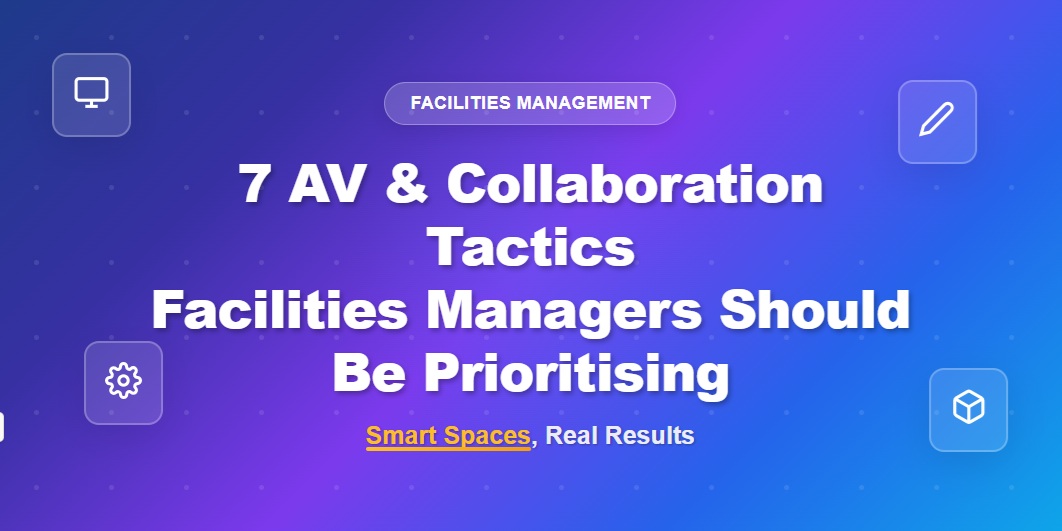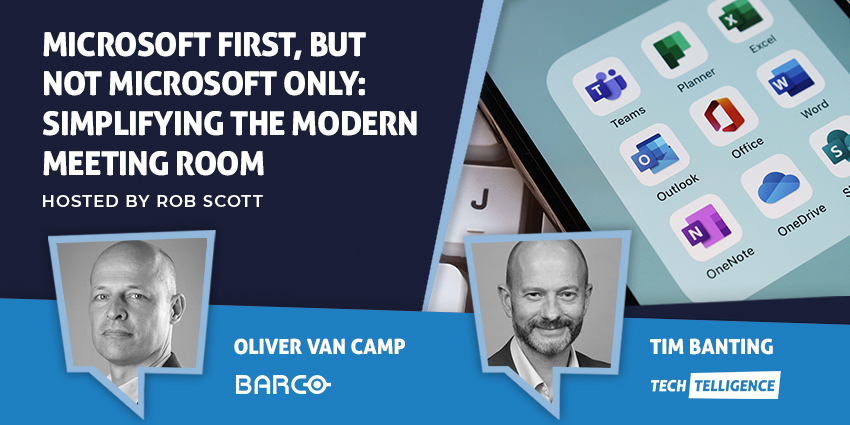Facilities leaders have always had to consider space and systems. But now, the job has a sharper edge. As hybrid work settles in and return-to-office policies ramp up, office environments are expected to cultivate more productivity with fewer assumptions and tighter budgets.
Spaces need to work harder, meeting rooms need to work smarter, and tech investments need to prove they’re worth it, fast.
In this new era, facilities managers no longer oversee buildings but sculpt the infrastructure for how work gets done. That means making shrewd, strategic choices about AV and collaboration technologies that support how people actually work today, not how they worked five years ago.
Here are seven practical, forward-thinking strategies that will help you make better use of your AV budget, support more productive ways of working, and deliver tangible value to your business.
Design Around Behaviour, Not Just Hardware
It’s easy to get caught up in spec sheets, but if the setup doesn’t match how people actually use a space, the technology won’t get used. Or worse, it’ll actively frustrate.
Start with the people. How do different teams practically collaborate? Where do quick conversations actually happen? What kind of meetings are genuinely most common? Once you understand those patterns, you can shape the space and tools around them, whether drop-in booths with video capability, flexible huddle zones, or meeting rooms equipped for hybrid participation without a fuss.
The point isn’t to pack in the most gear. It’s to support the level of work your teams are already doing, and want to do better.
Standardise for Clarity, Not Just Control
When every room works a little differently, people waste time figuring things out. That confusion adds up, and so does the support burden.
Choose a collaboration platform that fits your business and build AV standards around it. That means consistent hardware, interfaces, and signage across spaces, whether you’re managing one office or ten. Not only does this make life easier for employees, but it also makes management, updates, and troubleshooting far more straightforward.
Rather than locking people in, it’s about creating a trusting setup every time they walk into a room.
Get Real Data on How Spaces Are Actually Used
Guesswork won’t cut it anymore. To know whether your meeting rooms and shared spaces are working, you need data. Not booking calendars, but actual usage.
Sensor-based occupancy tools, room booking systems that sync with collaboration platforms, and clear reporting dashboards help you see which rooms are in demand, which are sitting empty, and where you’re getting the most value. That affords you a clearer view of what to change, what to scale, and what to stop spending money on.
Put simply, if you want your space to perform better, you need to measure its current performance.
Treat Acoustics as Core Infrastructure
Sound is often the forgotten part of AV. But ruined calls are just one shortfall of poor audio. It also burns out attention, kills focus, and creates friction that’s hard to pin down.
Think beyond speakers and microphones. Look at how the space itself shapes sound. Are voices bouncing off glass walls? Are open areas too noisy to focus? Sound-absorbing materials, better room shapes, directional mics and smart noise control tools can make a big difference.
At this stage of the hybrid and return-to-office (RTO) revolutions, this is foundational to every conversation that happens in your space.
Make Your Spaces Work for Everyone, Not Just One Platform
Offices need to support the real-world variety of devices, tools, and preferences people bring with them. Locking everything down to one vendor or platform can leave users out in the cold, especially external guests and cross-functional teams.
AV setups should be flexible: USB-C ports for content sharing, wireless options for quick projection, hardware that works across Microsoft Teams, Zoom, Webex and more. That way, you’re not creating digital gatekeepers but supporting more people getting more done, with less friction.
Manage Proactively, Not Reactively
If your team only hears about an issue when someone complains, you’re already on the back foot.
Modern AV systems should give you visibility into what’s happening across your spaces, from equipment health to usage stats to live issue alerts. With remote monitoring tools, you can stay ahead of problems, update software centrally, and keep systems running without constant manual checks.
That’s less time spent firefighting and more time planning, optimising, and delivering better service overall.
Don’t Just Focus on Meetings, Support Collaboration Everywhere
Work doesn’t only happen in scheduled meetings. It happens in corridor chats, spontaneous whiteboard sessions, and quick check-ins at a shared desk.
The best AV strategies go beyond orthodox meeting rooms. Mobile video kits, digital whiteboards in common areas, and one-touch video tools in smaller huddle spots all help support informal, unstructured moments where ideas actually happen. These tools shouldn’t be locked in a boardroom but authentically follow the flow of work itself.
Look at it as designing an ecosystem, not just a few isolated rooms.
Key Takeaways
AV and collaboration tools are far more than a background concern in 2025; they’re the connective tissue of the modern office. Facilities managers like you, who are in charge of those spaces, are in a prime position to ensure that those tools genuinely support how your organisation works.
The most effective strategies start with real needs and tangible data-driven outcomes, not shiny features. They favour consistency over complexity. They value acoustic comfort as much as video quality. Critically, they don’t just enable meetings, but momentum.
Get those fundamentals right, and the ROI on your tech investments will quickly illustrate itself for you.







